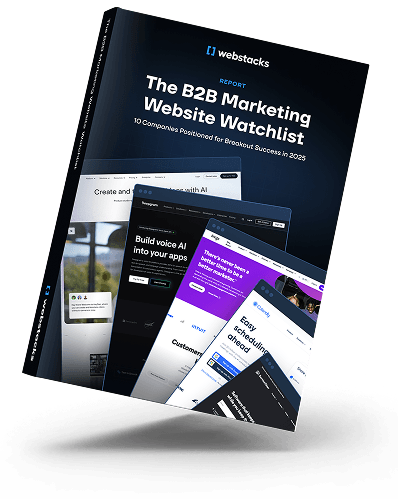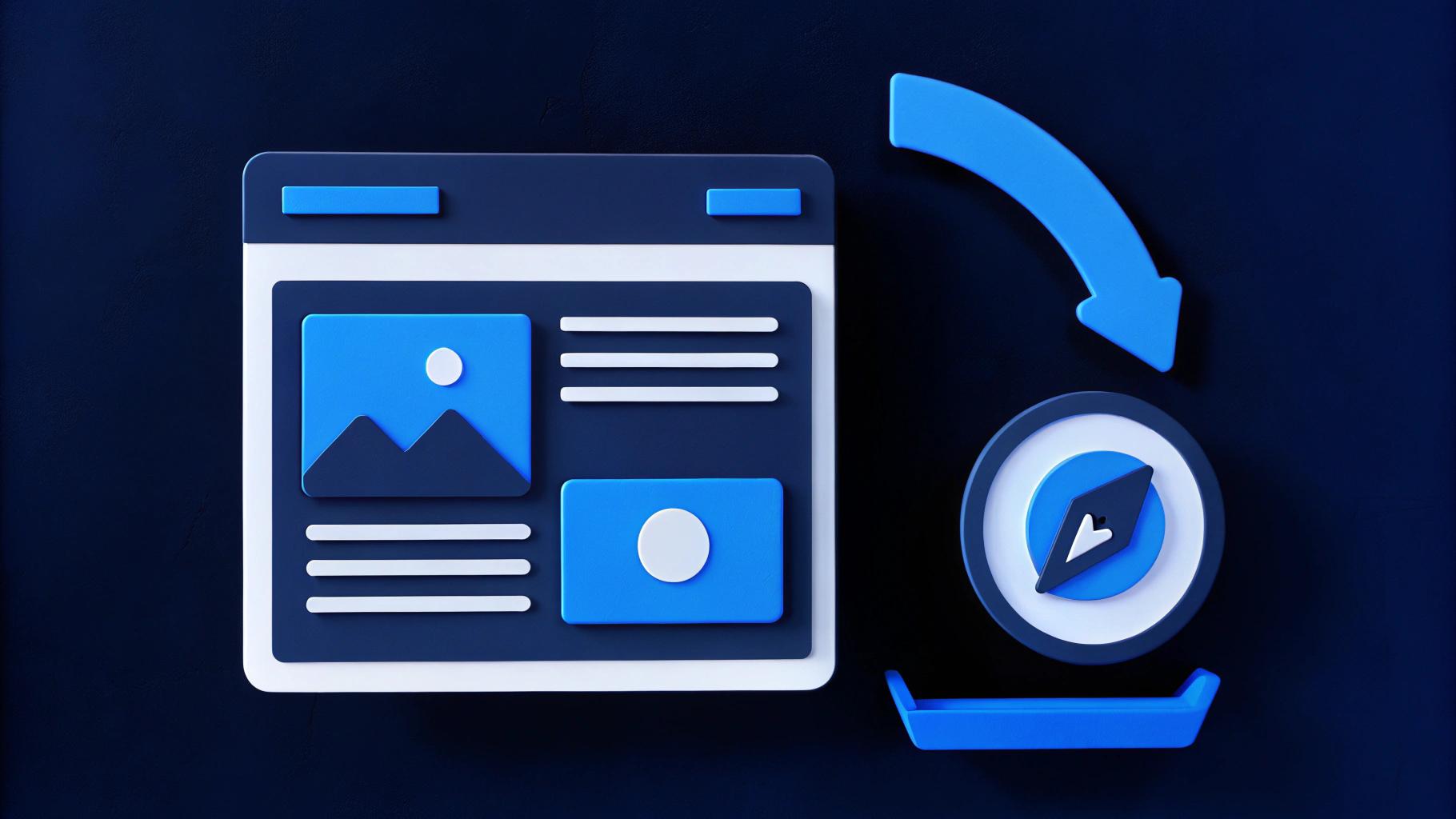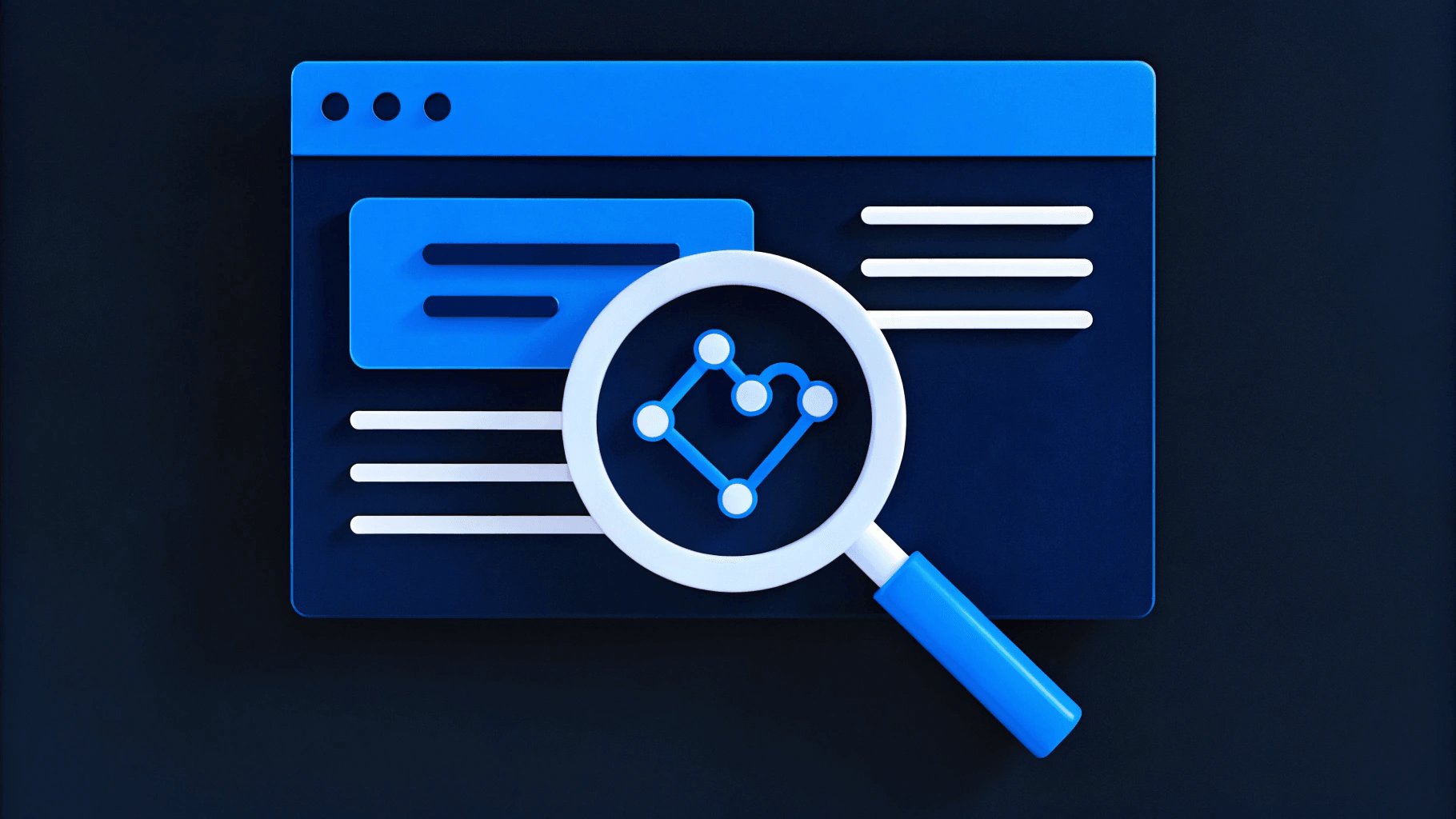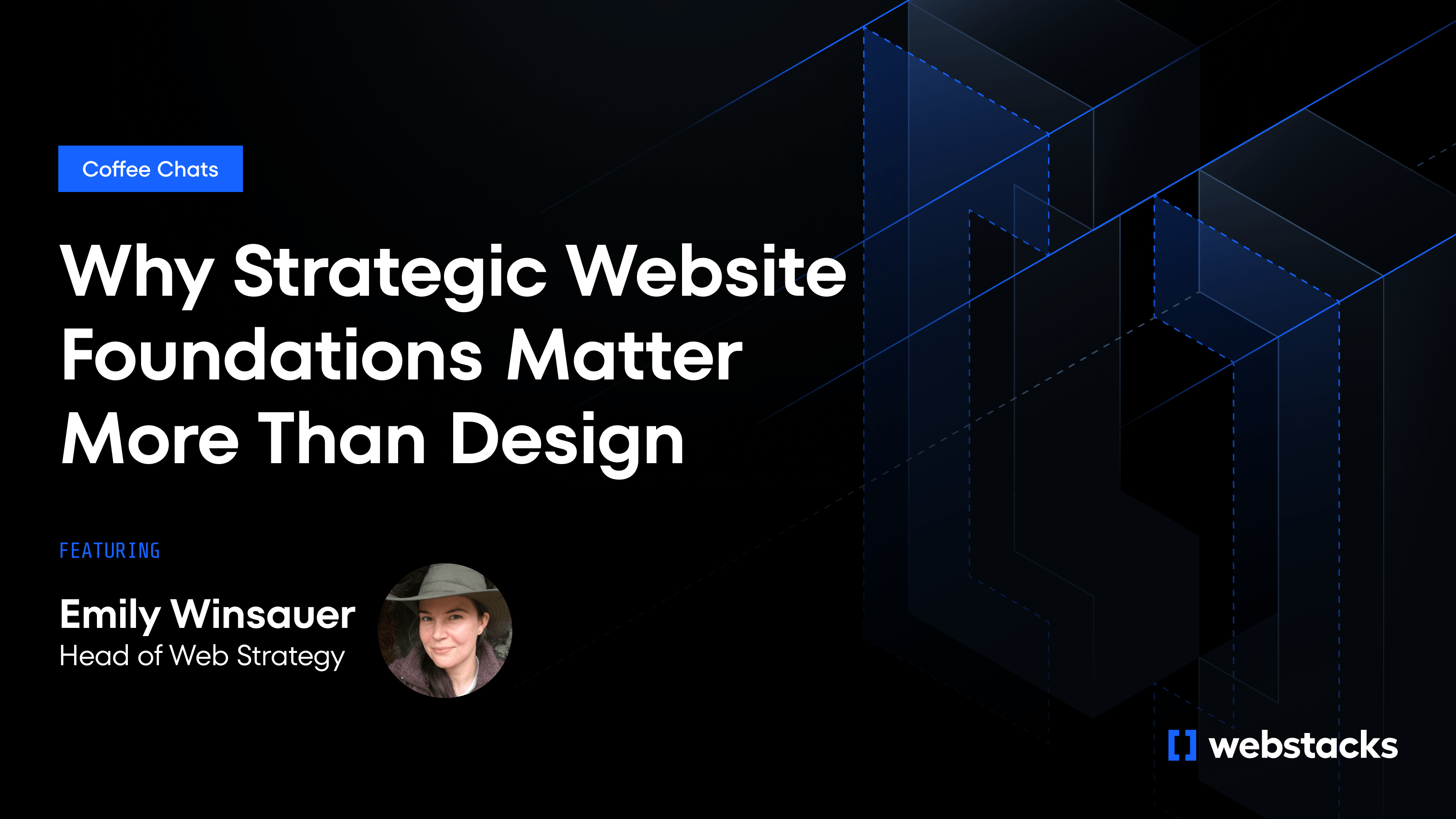The B2B customer journey has changed. Buyers are no longer following a planned sales process. Instead, they're researching on their terms, comparing options in private, and making decisions long before they talk to your sales team.
This shift changes everything. The old "make some calls, send some emails, close some deals" playbook doesn't work when buyers control a majority of their journey before you even know they exist.
Your website has become their primary research tool. They're sizing you up, evaluating your credibility, and deciding whether you're worth their time — all based on what they find online.
At Webstacks, we've seen this transformation firsthand. The websites that win aren't just pretty brochures. They're strategic tools that meet buyers where they are, answer their real questions, and guide them naturally toward a purchase decision.
This guide will show you how to build that kind of experience.

Why B2B Journeys Break Traditional Website Thinking
B2B purchases involve committees, not individuals. While a consumer might buy running shoes after one Instagram ad, B2B buyers need months to evaluate solutions that will impact their entire organization.
The CFO cares about ROI projections. The IT director worries about security and integrations. End users want something that won't disrupt their daily workflow. Each stakeholder enters at different times with different priorities.
The problem is that the vast majority of B2B buyers don't move through stages in order. They read case studies, attend demos, and then disappear for three months before requesting pricing. They loop back, skip ahead, and restart based on changing internal dynamics.
If your website assumes buyers will progress linearly from awareness to consideration to decision, you're misaligned with how they actually behave.
The 5 Phases of the B2B Customer Journey Your Website Must Support
There are five phases of the B2B customer journey to optimize for. Each requires different content, different CTAs, and different levels of sales involvement. Your website should be optimized to meet buyers in each of these five phases.
1. Awareness: "We Have a Problem Worth Solving"
Buyers recognize they need a solution but don't know their options yet. They're asking: "What's causing this issue?" and "How are others handling similar challenges?"
Your website should lead with educational content, such as:
- Industry reports and trend analysis
- Frameworks that establish expertise without pushing your product
- SEO-optimized blog content structured like a resource hub
- Clear navigation and internal links to guide readers deeper
Marketing leads with SEO-optimized content and brand visibility while sales holds back on premature outreach.
Track organic traffic growth, content engagement rates, and brand search volume.
2. Consideration: "What Are Our Options?"
Now they're evaluating different approaches. They want to understand "Which solution fits our situation?" and "What are the trade-offs between options?"
This is where solution-focused content matters most:
- Clear product comparisons and feature pages without jargon
- Interactive demos and self-serve product tours
- Case studies filterable by industry, company size, or use case
- CTAs like "Book a Strategy Call" or "Join a Live Demo"
Marketing delivers content,sales begins qualified lead engagement, and product teams ensure demo environments reflect real-world scenarios.
Monitor content downloads, demo requests, and sales-qualified lead progression.
3. Decision: "Can We Trust This Vendor?"
The buying committee is down to 2-3 vendors. They need proof: "Will this actually work for our organization?" and "Can we trust this company long-term?"
They're looking for reassurance — proof that you're the right call. This is where decision-stage content matters:
- Clear, upfront pricing pages that eliminate guesswork
- Security, compliance, and legal resources for technical decision-makers
- Customer logos, quotes, and measurable results for credibility
- Action-oriented CTAs like "Schedule Technical Demo"
- Easy sharing tools for buying committees to present your value internally
Sales takes the lead with proposals and stakeholder presentations while marketing provides proof points and competitive differentiation. Product teams address technical requirements clearly.
Watch proposal-to-close rates, sales cycle velocity, and decision committee engagement.
4. Activation: "How Do We Get Value Fast?"
Post-purchase, customers want immediate wins. They're asking: "How do we implement correctly?" and "When will we see results?"
This is the time to show momentum. Offer:
- Detailed onboarding guides and implementation checklists
- Knowledge base that reduces support tickets
- Integration of marketplace apps to connect to their existing stack
- Video tutorials for advanced feature adoption
Customer success leads activation while product teams ensure smooth technical implementation. Marketing supports with educational content and community building.
Measure time-to-first-value, feature adoption rates, and customer health scores.
5. Advocacy: "Should We Expand or Recommend This?"
Satisfied customers consider expansion and referrals. They want to know: "How can we get more value?" and "Should we recommend this solution internally or externally?"
This is your chance to turn satisfaction into momentum. Offer:
- Advanced training or certifications to deepen product adoption
- Clear upgrade paths and expansion opportunities
- Simple, incentive-backed referral programs with transparent tracking
- Easy testimonial submission and case study participation
- Community features like user groups or events
Customer success drives expansion conversations while marketing captures testimonials and case studies. Sales pursues account growth while product teams gather feature requests.
Track expansion revenue, referral generation, and customer satisfaction scores.

Align Your Website and Teams Around the Full Journey
Customer journey alignment fails when marketing does it alone. The best results come from cross-functional collaboration between product, marketing, sales, and customer success. Form a task force with representatives from each department to establish shared ownership of the customer experience.
As a task force, identify key stakeholders within your Ideal Customer Profile (ICP). B2B purchases involve 6-10 decision-makers, but they don't carry equal weight. Some control the budget, others influence technical requirements, and a few simply validate the decision.
- Economic buyers control budget
- Technical evaluators assess functionality
- End users interact with your solution daily
Your tech stack should support cross-functional alignment and insights into each decision-makers journey:
- Analytics platforms highlight where prospects drop off
- CRM systems surface account-level context
- Voice-of-customer tools explain the why behind the data
Website Optimization Tactics for Every Stage of the Journey
Once you’ve mapped your customer path, the next step is to remove the friction points that slow buyers down. Fixing them doesn’t require a total redesign. It starts with smarter, modular optimization.
1. Component-Based Testing
One of the biggest blockers is the use of generic calls-to-action that treat every visitor the same. When you rely on vague buttons like “Learn More” across the site, you’re asking a decision-stage CFO to take the same action as an awareness-stage marketing manager. It’s a sure way to lose both.
To fix this, use component-based testing to validate what works. Instead of overhauling entire pages, test key elements, such as hero sections, CTA blocks, and testimonial modules independently. This modular approach helps you quickly identify which CTAs work best for different journey stages:
- Awareness-stage visitors: “Download the Complete Guide”
- Decision-ready visitors: “Schedule Demo” or “Get Custom Pricing”
By focusing on individual components like value props, social proof, and buttons, you can improve conversion paths without disrupting the full experience.
2. Smart Personalization
Many websites treat all buyers the same because backend tools don’t talk to each other. When your CMS, CRM, and analytics systems aren’t integrated, it’s almost impossible to personalize content or understand what’s working.
To solve this, unify your stack. Use dynamic CTAs and firmographic targeting to tailor the site experience by company size, role, and behavior. For example:
- A first-time startup visitor might see industry primers.
- A returning Fortune 500 visitor gets a demo prompt and case study from a similar enterprise.
Take it further with account-based personalization:
- Highlight relevant features
- Surface use-case-specific content
- Make high-priority accounts feel like the site was built just for them
3. Friction Elimination
B2B websites often bury key details behind dense navigation layers or overload users with unnecessary forms. That adds up to stalled progress and missed pipeline. Instead, make momentum your default by eliminating common friction points:
- Simplify navigation so that prospects don’t need to dig to find what matters.
- Use progressive disclosure to surface deeper details only when needed—think expandable specs or gated pricing.
- Cut form fields to only ask what’s necessary up front.
- Optimize site speed to keep high-intent visitors engaged during critical decision moments.
Together, these tactics create a system that adapts to how B2B buyers move, not how your site was originally built.
Build a Website That Scales With Your Growth
Your B2B customer path isn't static, and neither should your website be. The most successful companies treat their sites as extensions of their go-to-market strategy, not just something to update once every year or two.
Webstacks builds sites differently. Composable architecture means your site becomes modular and flexible — you can test, iterate, and optimize individual components without rebuilding everything from scratch.
ServiceTitan used this to migrate to a modern stack (Gatsby + Contentful), launch content hubs, and scale new business units with ease. Also, Calendly evolved from PLG to enterprise selling, adopting atomic components that enabled 10× faster content launches and a 50% lead lift.
Customer experience optimization never ends. Your buyers evolve, market shifts, and business grows. Your website should grow right alongside that progression.
Ready to build a website that works as hard as your sales team? Start with a strategic redesign that puts your customer journey at the center of everything.




